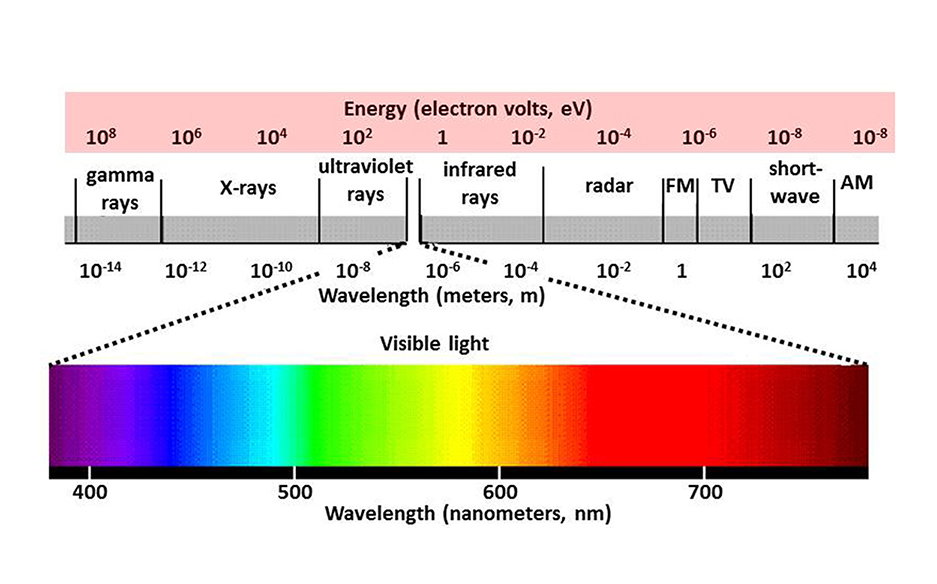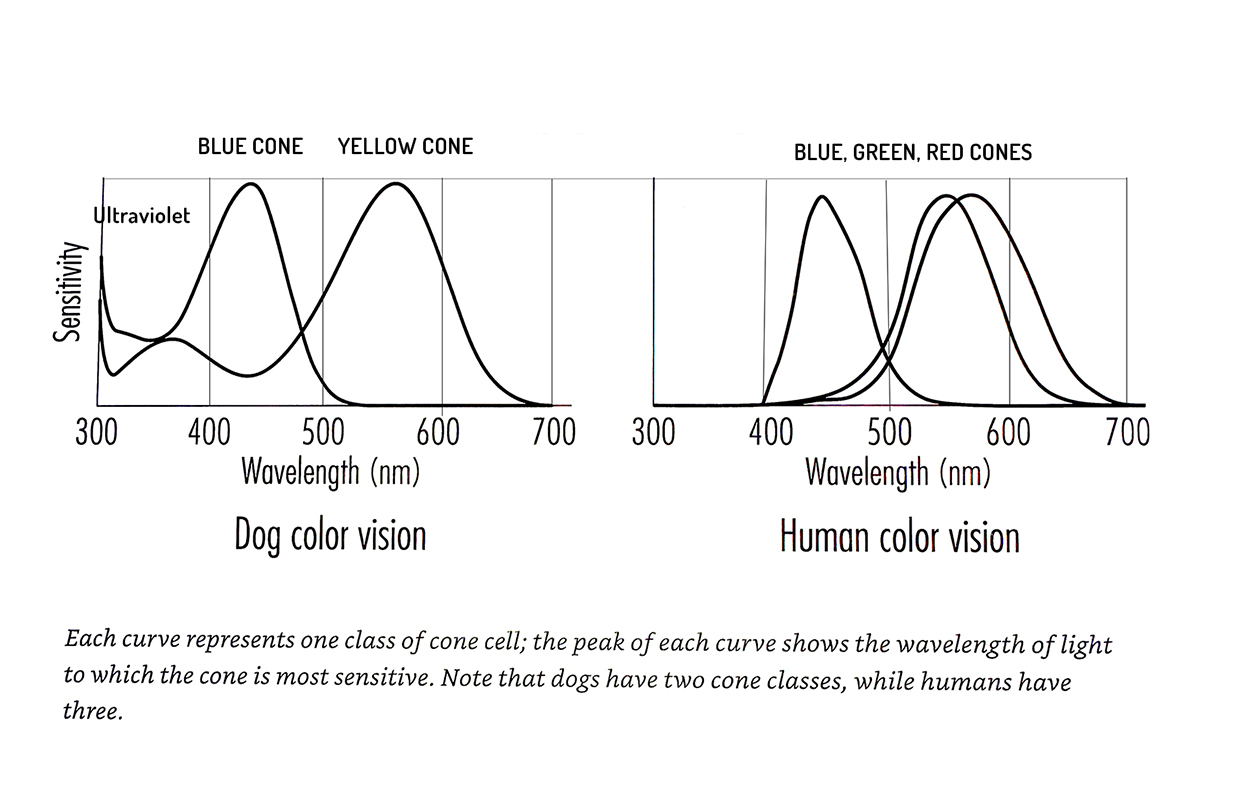Series 1: Dogs
The Dog Vision Tool
In theory, this tool demonstrates the differences of vision between dogs and humans. From my observations, I don’t believe this is what a dog sees but it’s an interesting tool and idea.


Articles & PDF’s to download
Chapter Five – The World from a Dog’s Point of View: A Review and Synthesis of Dog Cognition Research
Volume 45, 2013, Pages 209-406
Excerpt: Driven by both applied and theoretical goals, scientific interest in canine cognition has experienced a rapid surge in popularity, especially over the last 15 years. Here we provide the most comprehensive review to date of dog cognition research, capturing all the articles (285) we could find on the subject going back to 1911.
Visual discrimination of species in dogs (Canis familiaris)
Published January 2013
Excerpt: The goal of our study was to determine whether dogs can discriminate any type of dog from other species and can group all dogs whatever their phenotypes within the same category. Nine pet dogs were successfully trained through instrumental conditioning using a clicker and food rewards to choose a rewarded image, S?, out of two images displayed on computer screens.
Published November 2017
What do dogs (Canis familiaris) see? A review of vision in dogs and implications for cognition research
Color vision
The dog’s ability to distinguish different colors remains controversial. Humans have three types of cone photoreceptor cells (long-wave (red), medium-wave (green), and shortwave (blue), at spectral peaks of 558 nm, 531 nm, and 419 nm, respectively). Dogs have only two, which almost identically correspond to short-wave and long-wave sensitivities (blue at a spectral peak of 555 nm and yellow at 429 nm) (Jacobs et al., 1993; Neitz, Geist, & Jacobs, 1989). This has may be unable to perceive differences between green, yellow, and red color cues. Accordingly, early studies suggested dogs lacked good color vision (Neitz et al., 1989). However, there is some even older evidence that suggests dogs may be able to perceive these colors (e.g., red and green) even without possessing the cone photoreceptor cells believed to be responsible for this ability (Rosengren, 1969). More research is needed to understand the extent to which dogs perceive color, and how similar dog color perception is to that of non-color-blind humans.
In addition to their preference for color cues, it appears that dogs may have a capacity to perceive ultraviolet light (Douglas & Jeffery, 2014). In a cross-species assessment of ultraviolet (UV) sensitivity in mammalian eyes, dogs were identified to have lenses transmitting significant amounts of UVrays (335 nm). This suggests that even though dogs do not have a specific UV visual pigment, they may be sensitive to ultraviolet light (Douglas & Jeffery, 2014). If this is the case, cognition researchers must begin to determine the UV light levels that dogs can perceive, and consider the effects this may have on the stimuli and conditions in which they are being assessed.
Finally, there is evidence to suggest that dogs may have a magnetic sense associated with their visual system. A recent study observed the presence of cryptochrome 1, a flavoprotein located in the canine eye that is sensitive to blue light. Additionally, it is involved in responding to light-dependent magnetic orientation based on the earth’s magnetic field (Nießner et al., 2016). These authors suggest that this does not likely act as an additional pigment for the perception of color, but instead likely functions to perceive the earth’s magnetic field.


September 2013
Colour cues proved to be more informative for dogs than brightness
Excerpt: The results of early studies on colour vision in dogs led to the conclusion that chromatic cues are unimportant for dogs during their normal activities. Nevertheless, the canine retina possesses two cone types which provide at least the potential for colour vision. Recently, experiments controlling for the brightness information in visual stimuli demonstrated that dogs have the ability to perform chromatic discrimination. Here, we show that for eight previously untrained dogs colour proved to be more informative than brightness when choosing between visual stimuli differing both in brightness and chromaticity. Although
brightness could have been used by the dogs in our experiments (unlike previous studies), itwas not. Our results demonstrate that under natural photopic lighting conditions colour information may be predominant even for animals that possess only two spectral types of cone photoreceptors.
Published 2020
Functional Performance of the Visual System in Dogs and Humans: A Comparative Perspective
Excerpt: Vision in dogs is generally considered poor compared with humans, and recent reports have reviewed some of the physiological principles underpinning dog vision, but a systematic comparison of the physiological and neurobiological features of vision in dogs compared with humans appears to be lacking. This means there is a risk of an anthropocentric perspective of the topic rather than an understanding grounded in a wider biological context.
Color Vision
Humans are trichromats and can differentiate hues of blue (380–550 nm), green (430–670 nm), and red (500–760 nm), whereas dogs are dichromats and can differentiate well only hues of blue (430–485 nm) and yellow (500–620 nm; Jacobs, Deegan, Crognale, & Fenwick, 1993; Miller & Murphy, 1995; Neitz, Geist, & Jacobs, 1989; Siniscalchi et al., 2017). Therefore, color vision in dogs resembles red–green color blindness in humans, but contrary to popular belief dogs can still discriminate red and green from gray; both dogs and humans have a spectral neutral point at 480 and 505 nm, respectively, which is important for differentiating shades of gray (Byosiere, Chouinard, Howell, & Bennett,
Published December 15, 1995
Vision in dogs
Excerpt: Summary: Compared with the visual system in human beings, the canine visual system could be considered inferior in such aspects a the degree of binocular overlap, color perception, accommodative range, and visual acuity. However, in other aspects of vision, such as ability to function in dim light, rapidity with which the retina can respond to another image (flicker fusion), field of view, ability to differentiate shades of gray, and, perhaps, ability to detect motion, the canine visual system probably surpasses the human visual system…….
Online Information
Enter the unreal world of Ultraviolet Colour Photography
New color vision pathway unveiled
Human Vision and Color Perception
Rods in daylight act as relay cells for cone-driven horizontal cell–mediated surround inhibition
Spatial relationships among the cellular tapetum, visual streak and rod density in dogs
Through a Dog’s Eyes: fMRI Decoding of Naturalistic Videos from the Dog Cortex
Seeing The World Through A Dog’s Eyes Reveals Interesting Difference To Human Vision
Spectral characteristics of the photoreceptors of the dog eye
High visual acuity revealed in dogs
Dogs are not better than humans at detecting coherent motion

